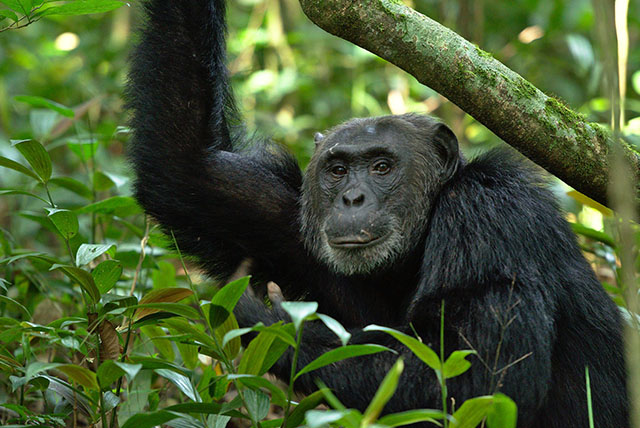Kibale National Park, located in southwestern Uganda, is one of the country’s most famous wildlife destinations. It is renowned for its rich biodiversity, particularly the large population of chimpanzees. Here’s an overview of what you should know when planning a trip to Kibale National Park:
1. Overview of Kibale National Park
- Location: The park is situated in the western part of Uganda, near the foothills of the Rwenzori Mountains. It covers approximately 795 square kilometers.
- Established: The park was gazetted as a national park in 1993.
- Elevation: The park lies at altitudes ranging from 1,100 meters (3,609 feet) to 1,590 meters (5,217 feet) above sea level.
2. Main Attractions
-
Chimpanzee Tracking: Kibale is best known for its population of over 1,500 chimpanzees, making it one of the top places in the world to see these primates in the wild. Chimpanzee trekking is the most popular activity, where visitors can see these great apes in their natural habitat. There are also opportunities to track other primates like red colobus monkeys, black-and-white colobus, and the endangered L’Hoest’s monkey.
-
Other Wildlife: The park is home to over 375 species of birds, and several mammals including elephants, buffaloes, leopards, and bushbucks.
-
Forest Walks: The park features beautiful trails through tropical rainforests, which are not only a great way to see wildlife but also to appreciate the stunning scenery.
-
Bigodi Wetland Sanctuary: A community-run area near the park, known for its diverse birdlife and primates. It’s an excellent location for birdwatching and nature walks.
3. Best Time to Visit
- Dry Seasons: The best time to visit Kibale National Park is during the dry seasons, from June to September and December to February. These months offer more favorable weather for trekking and wildlife viewing.
- Wet Seasons: The park is open year-round, but heavy rains during the wet season (from March to May and October to November) can make trekking more challenging.
4. How to Get There
- By Road: Kibale National Park is about a 5-6 hour drive from Kampala (Uganda’s capital). You can also travel from Entebbe, which is about a 6-hour drive.
- By Air: While there are no direct commercial flights to Kibale, you can fly to Kasese or Fort Portal (the closest town), and then arrange for a transfer by car to the park.
5. Accommodation Options
- Luxury Lodges: There are a few luxury accommodations in and around the park, such as Kyaninga Lodge or Primate Lodge, offering upscale experiences with beautiful views of the surrounding nature.
- Mid-Range & Budget: Options include places like Chimpanzee Forest Guesthouse, Kibale Forest Camp, and various budget-friendly campsites for those looking for more affordable stays.
6. Activities
- Chimpanzee Trekking: The most popular activity in the park. You are accompanied by a trained guide who helps you locate the chimpanzees, provides information about their behavior, and ensures responsible interaction.
- Bird Watching: Kibale has over 350 bird species, including the endangered Green-breasted Pitta, and is perfect for birdwatching enthusiasts.
- Nature Walks: Explore the forest on guided walks to observe the rich plant life, trees, and smaller animals.
- Cultural Visits: You can visit local communities near the park to learn about the cultural heritage and traditional ways of life.
7. Fees and Permits
- Chimpanzee Tracking Permit: One of the main costs is the chimpanzee trekking permit, which is usually around $200USD per person. It’s important to book your permits well in advance, especially in the peak season.
- Park Entrance Fees: For those who are only visiting for a forest walk or bird watching, the entrance fees to the park itself are generally lower.
8. Travel Tips
- Health Precautions: Make sure to check the latest health advisories regarding vaccinations, such as Yellow Fever, which is required for entry to Uganda.
- Packing Essentials: Wear sturdy hiking boots, light clothing for comfort in the warm weather, a hat, and insect repellent (for mosquitoes). Don’t forget a good camera and binoculars for wildlife viewing.
- Trekking Tips: If you are planning to trek to see the chimpanzees, be prepared for some physical exertion as the forest paths can be muddy and sometimes steep.
9. Conservation Efforts
- Kibale is important for conservation, and a portion of the revenue from tourism supports local communities and conservation initiatives, helping to protect the chimpanzees and other wildlife.
Would you like more specific recommendations for activities, or accommodations? Let me know!
3 Days Kibale Chimps Safari
Kibale Forest, often referred to as the “Primate Capital of the World,” is home to an impressive 13 primate species. The most renowned among them is the chimpanzee, but visitors can also encounter the L’Hoest’s monkey, the endangered red colobus monkey, black-and-white colobus monkey, blue monkey, grey-cheeked mangabey, red-tailed monkey, bush baby, and potto, among others.
Suggested Itinerary
Day 1: Depart from Kampala and travel to Kibale National Park.
Day 2: Engage in chimpanzee tracking or opt for the full-day habituation experience.
Day 3: Explore the local culture before returning to Kampala.

